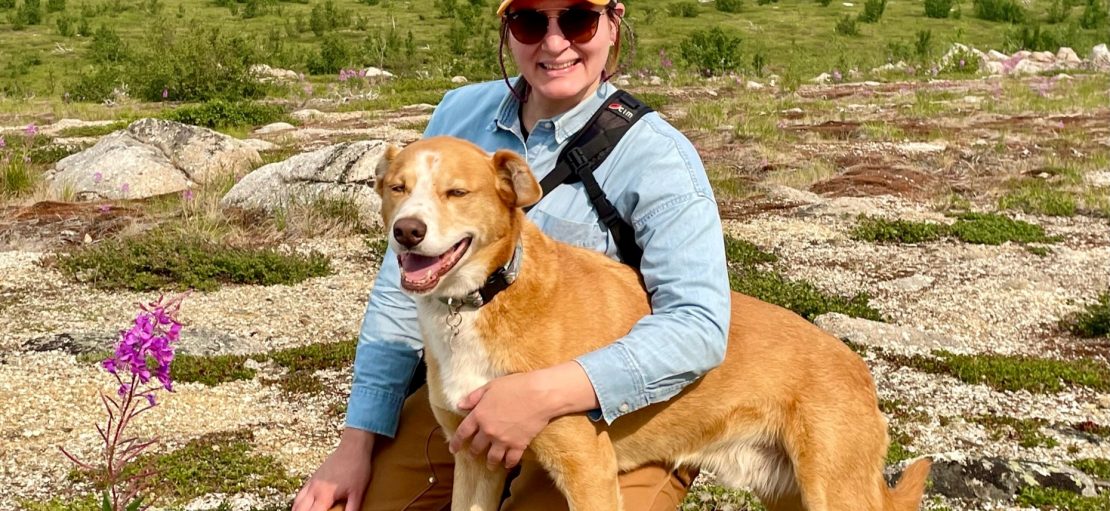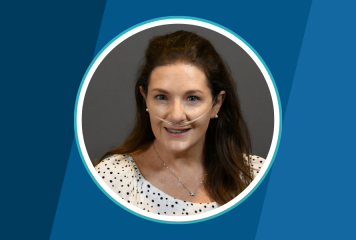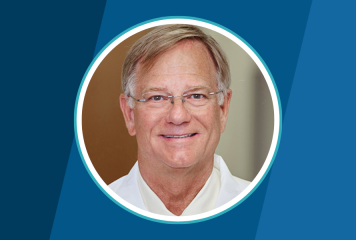Andrea Caballero, MD, is the Medical Director of Infection Prevention and Antimicrobial Stewardship at St. Elias Specialty Hospital, a consultant at Providence Alaska Medical Center and Head of Denali College at the University of Washington School of Medicine WWAMI Program. She joined the ABIM Infectious Disease Board in 2023.
What does your work with the WWAMI Program entail? How did you get involved in that?
WWAMI is the University of Washington’s unique, multi-state education program with campuses across five states (Washington, Wyoming, Alaska, Montana and Idaho). The Colleges program is a system of mentorship support within WWAMI, and I took over Denali College (Alaska) two years ago. Our main role is to build community with the students, support them, coach them and mentor them throughout their four years of medical school and beyond. The groups are small so students get individualized support from their physician mentors who come from a variety of specialties. Aside from having my own small group of students to mentor, I coordinate the work of the local mentors in Alaska.
In addition to my role as Head, I teach the Foundations of Clinical Medicine, which is a two-part longitudinal course comprising a classroom component and an afternoon hospital tutorial. From the beginning of med school, students go into the hospital with a mentor, interview patients, and do exams and the writeup afterwards. Students are exposed to the hospital and patient interaction from the beginning of their education.
How is the approach to medical education at WWAMI different from that of other medical schools?
A lot of medical schools have been moving towards more mentorship and earlier hospital exposure. When I was in school, I was part of a very large class. I didn’t get a lot of individualized one-on-one time with an attending physician and I didn’t have this degree of exposure to patients until third year. Having the students in the hospital from their first year allows them to make those clinical connections early on and lets them start working on their professional identity. I think there’s a lot of value for the students; it’s so easy to get bogged down with studying and this way they get to interact with patients and the health care system, which is why they’re here in the first place.
You serve in a variety of roles, including clinical and instructional—what is most meaningful to you about the work that you do in each one?
I feel very fortunate that Alaska has allowed me to function in so many different roles and have this unique split in responsibilities. I have a private infectious disease (ID) practice, function as a medical director of infection prevention at a local hospital, and still get to teach and work with medical students.
I really enjoy the cognitive challenges of my specialty and the long-term relationships I can have with my patients. Early in my career I was passionate about serving underserved communities, and ID has given me the opportunity to do that.
As the medical director of infection prevention at St. Elias, I enjoy the challenges of looking at the hospital as a whole, then evaluating our policies and how these have a larger impact on all of our patients and the staff. Thinking about systems improvements is something I’m very interested in and that role allows me to do that.
The teaching role has given me a different kind of satisfaction, which in some ways has surprised me. Watching first- and second-year med students start to make connections in the hospital or during our simulation labs is incredibly satisfying. This new generation of doctors is so aware of social determinants of health it gives me a lot of hope for the future.
What is unique about practicing in Alaska?
The geography poses unique challenges when it comes to delivering care. Our pool of specialists is limited; certain things we cannot do in a timely fashion and we often need to send patients to Seattle or Portland. There’s a lot we figure out how to do and we do it well. People in the lower 48 both underestimate the quality of care we provide and overestimate what we’re able to do. I think it’s a fun place to practice.
When I was in Soldotna, I was the only ID doctor with a catchment area of 41,000 people. I was also doing primary care and it was a great challenge right out of fellowship. The phrase “the buck ends with you” felt very relevant then. Even being in Anchorage, there are a lot of resources we do not have, and yet I think we are able to deliver high-quality medical care with those limitations.
What advice would you give to someone starting their medical career?
Be open to being creative. I’ve taken a less than traditional route and I’m pretty sure a lot of people thought it was wild that I was coming up to Alaska. It was a great learning opportunity and I’ve been able to build my career in ways I never thought of before. There is no one path that is best for everybody. Opportunities will show up; just be ready for them.
You were one of only FIVE infectious disease specialists in Alaska during the pandemic; what lessons did you learn from that experience and how do they inform your work now?
I have very strong opposing feelings. It was an incredibly challenging time but it was also a time of great growth. At that point I was not quite three years out of fellowship, I had just relocated to Anchorage and quickly found myself at the front line as one of very few full-timers here. I’m proud of the contributions I made and really proud of how I represented myself in challenging situations. I feel like I had a ten-year career in a short amount of time. This did allow for burnout to accumulate faster. That experience necessitated that I take a step back and look at my career and reprioritize how I want to spend my time. It forced me to look at the bigger picture of medicine and the impact I want to have. That’s how I ended up at WWAMI! And now with ABIM.
Can you talk about your work as a medical interpreter and community advocate in New Orleans before medical school? How has that experience stayed with you?
I finished college two years after Hurricane Katrina hit and the city was still recovering. I was working as a Spanish-English interpreter in a low-income neighborhood in a clinic that offered care on a sliding scale. Being able to provide language services to people who felt very lost in the medical system really showed me the importance of meeting every patient where they are.
I was also helping out at a mobile clinic on a street where day laborers gathered. These were undocumented folk, mostly men who had left their families back in Central America for an opportunity to send money back. I was able to provide language services but also handed out construction PPE. The working conditions were pretty miserable and unsafe for these men. They were underpaid and overworked, and had no PPE. Being able to breach the language barrier and give someone a respirator and instruct them how to use it really opened my eyes to social determinants of health that I hadn’t realized before.
These experiences still influence how I encounter patients. My focus is still on the individual patient, how our systemic injustices affect their access to care and trust in the medical profession. Working in the community and my own personal experience as an immigrant continue to influence how I present myself and how I practice medicine.
Why did you want to join the Infectious Disease Board? What are you looking forward to about this role?
I thought this would be a good opportunity to have a broader impact in medicine. I think showcasing that you can have a less traditional path and still have a valuable voice in a place like ABIM sets a good example. I hope to bring a unique voice as an early career physician, too. I also really value making connections and this is a little like building community on steroids. I’m looking forward to collaborating with other organizations and working with so many brilliant minds with such different experiences from all over the country.
What do you most want diplomates to know about you?
My students have all heard my philosophy of the three pillars that make a good doctor. The first is clinical knowledge: you need a strong base. One of the ways we quantify that is through board certification. The second is to be a good caregiver. Are you meeting patients on possibly the worst day of their life and showing up as a human? Third is to be a good colleague: are you a member of the team everyone wants to work with? A great doctor embodies all of those three pillars.



